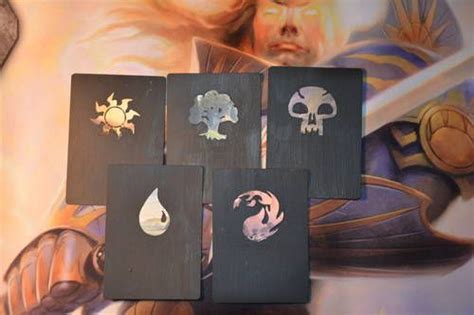Brewing Beyond the Meta: Crafting Custom MTG Cards
Magic: The Gathering's enduring appeal lies not just in its strategic depth and competitive scene, but also in its boundless creativity. While battling for dominance in established formats is thrilling, many players find equal—if not greater—satisfaction in designing their own cards. This act of creation, of brewing beyond the established meta, allows for unparalleled exploration of game mechanics and thematic storytelling. This article dives into the process of crafting custom Magic cards, from initial concept to playtesting and refinement.
Why Create Custom MTG Cards?
The allure of custom card creation is multifaceted. For some, it's the challenge of balancing power and originality. Others are driven by a desire to realize specific thematic ideas or explore untested mechanics within the game's framework. Still others enjoy the collaborative aspect, sharing their creations and receiving feedback from the online community. Ultimately, it's a powerful avenue for self-expression and a deeper engagement with the game itself.
The Design Process: From Idea to Reality
Creating a truly compelling custom card involves more than just jotting down an idea. It's a structured process demanding careful consideration of various elements:
1. Conceptualization: The Spark of an Idea
This initial stage involves brainstorming. What kind of card do you envision? A powerful creature? A disruptive spell? A game-changing planeswalker? Consider its role in a deck and the overall strategy it will support. Think about its flavor and how it fits into a broader narrative or theme.
2. Defining Mechanics and Stats: Fleshing Out the Idea
Once you have a core concept, you need to define its specific mechanics. What abilities does it possess? How costly is it to cast (mana cost)? What are its power and toughness (if it's a creature)? Remember to balance its strengths and weaknesses. A card that's too powerful will break the game, while one that's too weak will be unplayable.
3. Card Text & Art: Bringing It to Life
The card text must be precise and unambiguous. Use clear and concise language to avoid confusion. Many online resources offer templates to help you format your card text correctly, ensuring it's readable and easily understood. While creating the card art is optional, a compelling visual element can significantly enhance the overall experience.
Addressing Common Design Pitfalls
Several common mistakes plague novice custom card designers:
Overpowered Abilities: A card that's too strong will overshadow other cards and create an unbalanced game environment.
Underpowered Abilities: Conversely, a card that's too weak will be rendered useless, failing to impact the game.
Unclear Card Text: Vague or ambiguous wording leads to confusion and frustration during gameplay.
Ignoring Synergies: A truly effective card often works well in conjunction with other cards in a deck, creating powerful synergies.
Testing and Iteration: Refining Your Creation
Once you've created your card, don't just assume it's perfect. Playtesting is crucial! Try incorporating it into different decks and game scenarios to observe how it performs in practice. Based on your observations, iterate on the design, adjusting its stats, abilities, or even its core concept.
Resources for Custom Card Creation
Numerous websites offer tools and templates to assist in custom card creation. These sites often include galleries showcasing other players' designs, providing inspiration and opportunities for feedback. These online communities are invaluable for playtesting and refining your creations.
Frequently Asked Questions (PAA)
Where can I find templates for creating custom Magic: The Gathering cards?
Many websites offer free, downloadable templates for creating custom Magic cards. A simple online search for "MTG card template" will yield numerous results. These templates often include guidelines for proper formatting and text layout.
How do I balance my custom card's power level?
Balancing a custom card is a crucial step. Consider existing cards with similar mechanics and mana costs. Aim for a power level that's comparable but introduces a unique element. Playtesting is essential to gauge its actual power level in practice.
What software is best for creating custom MTG art?
There's no single "best" software. Many artists use programs like Photoshop or GIMP for digital art creation. The choice often depends on personal preference, experience, and the complexity of the desired art style.
Are there any legal issues with selling custom MTG cards?
Selling custom cards that directly replicate official Wizards of the Coast artwork or card names is a violation of copyright. Creating original artwork and mechanics is key to avoiding legal issues. However, selling even original cards without permission from Wizards of the Coast is generally not permitted.
Brewing beyond the established meta is a rewarding endeavor. By following a structured design process, addressing potential pitfalls, and embracing the iterative nature of design, you can create truly unique and engaging Magic: The Gathering cards, enriching both your own gameplay and that of others. So, unleash your creativity, and craft your own legends!

